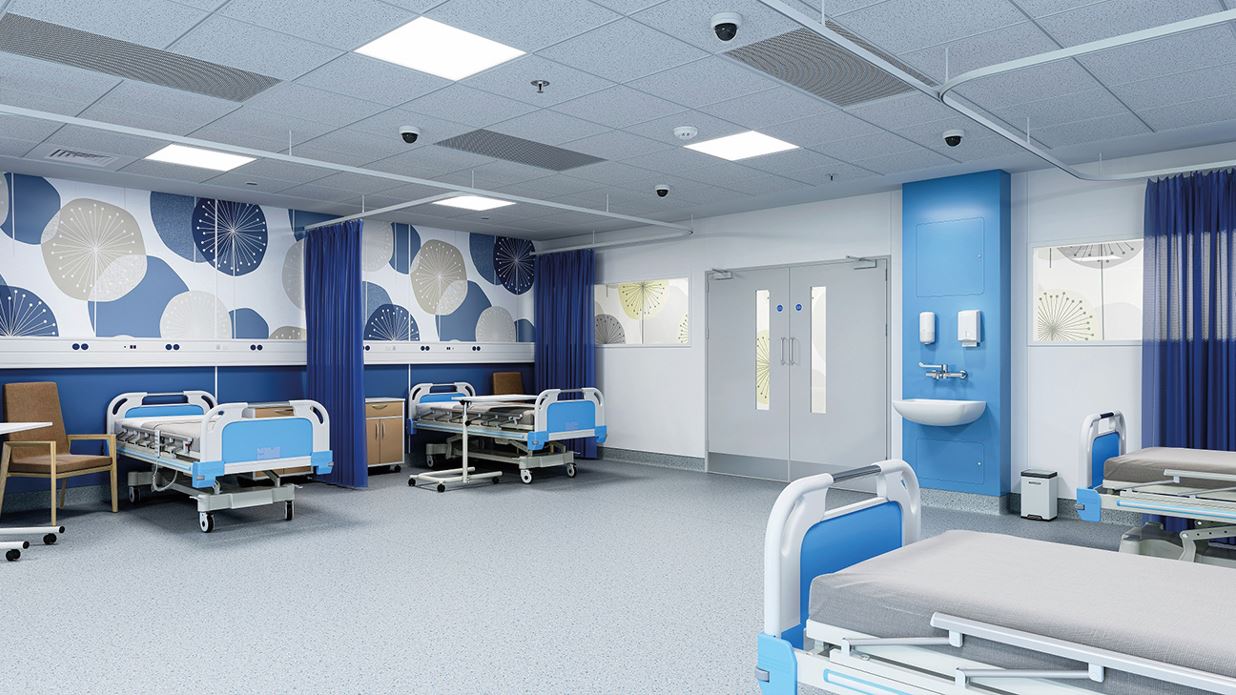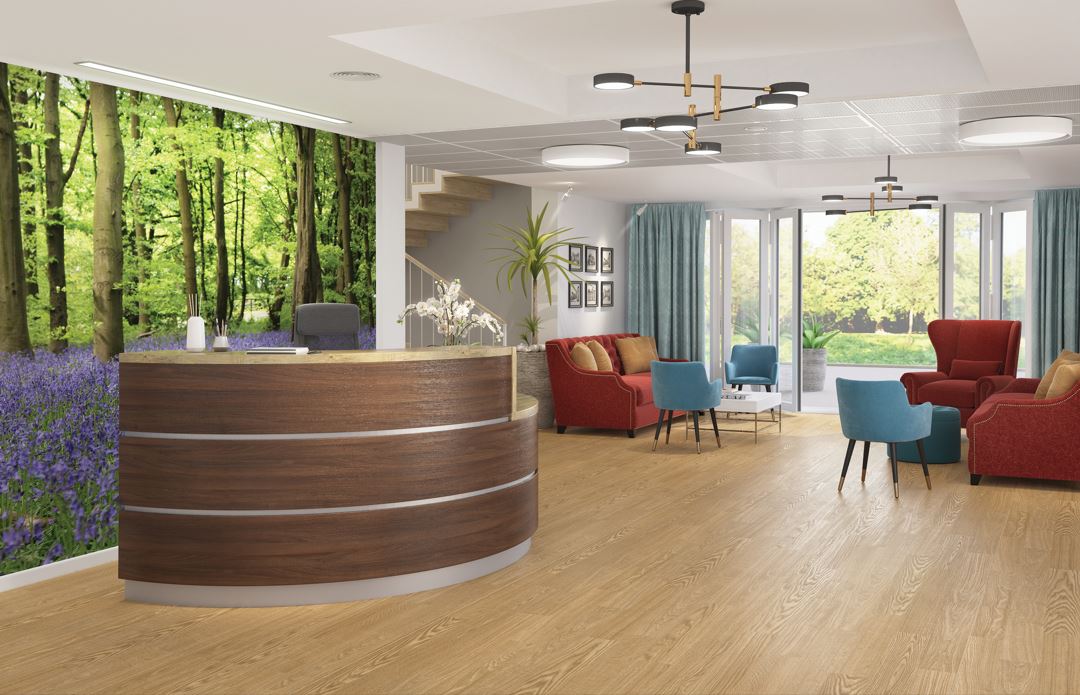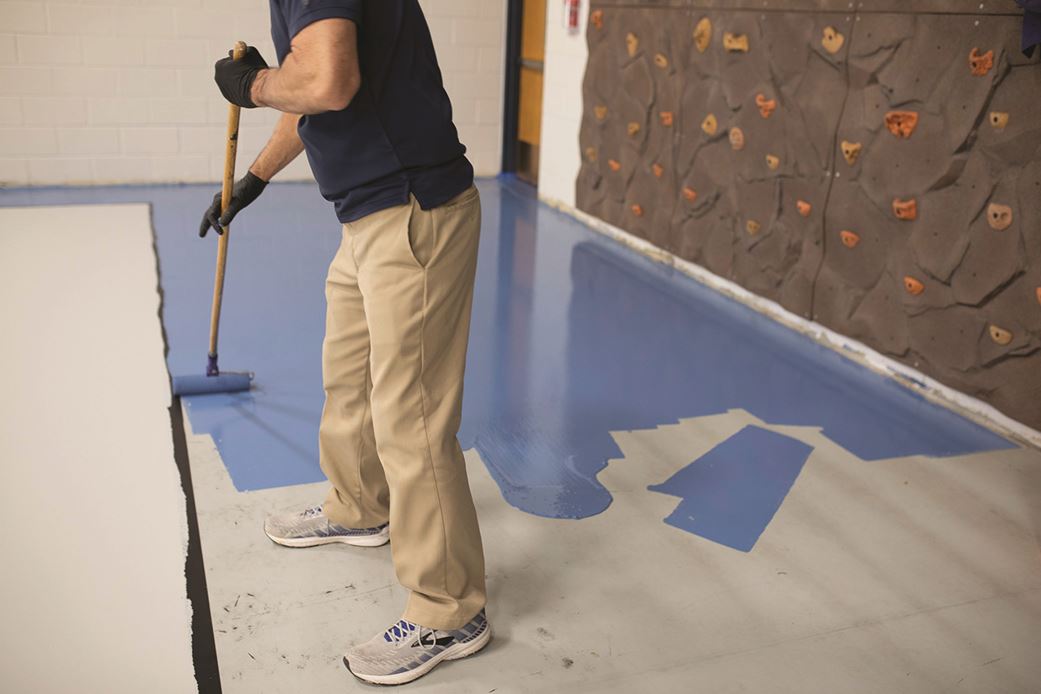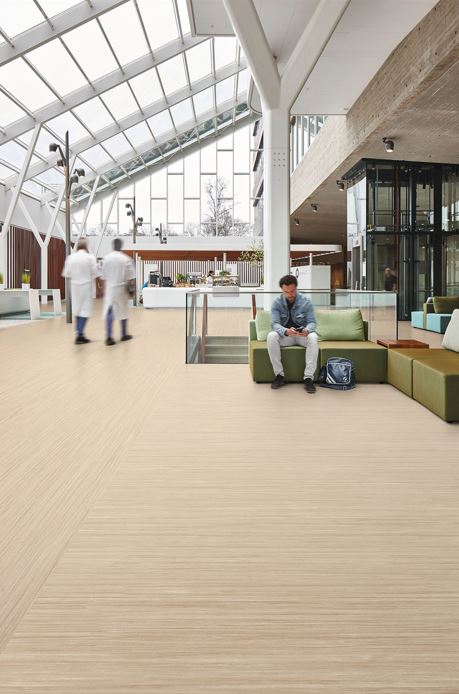
With flooring representing one of the largest surfaces within any building, it is an important focus when looking at ways to reduce energy use and carbon emissions.
This article looks at how flooring manufactures are helping to reduce carbon emissions within healthcare environments.
From the materials used to make flooring, to installation and maintenance requirements, and eventual replacement and disposal; the carbon footprint of flooring products is significant. And manufacturers are increasingly developing new, greener solutions, which are proving particularly attractive to the healthcare sector.
Richard Burn, product manager at Altro, said: “In the UK, sustainability has often been viewed as a ‘nice to have’, rather than ‘must have’, client requirement, with choices often based on brand, aesthetic, performance, price, and habit. “I believe the NHS net-zero drive will lead to faster investment in carbon-reducing alternatives such as adhesive-free technologies in the future, along with greater support to use local manufacturers that source quality materials from local suppliers.” Mark Bauer, environment specialist at Forbo Flooring Systems, adds: “The NHS net-zero carbon drive highlights the fact that sustainability is no longer just for a select number of projects, and instead the sector will now be making better, more-environmentally-conscious product choices to help reduce the environmental impact of all healthcare buildings.”
GOING GREEN
And flooring manufacturers have every reason to focus on sustainability as, in April this year, the National Health Executive mandated that NHS organisations require all suppliers with an anticipated contract value above £5m to publish a Carbon Reduction Plan (CRP)
setting out their sustainability goals and targets. And Burn said increased uptake of adhesive-free flooring solutions will be key to this drive as they are designed to be laid straight onto the subfloor – or even over an existing floor – with minimal preparation, making them low maintenance and quick to install in busy health settings. They are also able to be walked on almost immediately, further reducing downtime, and they emit low volatile organic compounds, improving ventilation and reducing odours. Bauer said: “Our adhesive-free Fast Flooring range is designed to be installed without any adhesives or tackifiers, which makes the material easy to install, as well as easy to remove and reuse.
“As such, by choosing to install adhesive-free products, there is an opportunity to increase circularity within the healthcare sector, as it eliminates a source of contaminant.” Recycling is also a key driver for research and development in the healthcare flooring industry.
PROTECTING THE PLANET
Altro has co-founded Recofloor, an innovative collection and recycling service for commercial waste vinyl flooring across the UK, with many of its flooring ranges containing up to 10% post-consumer recycled content. The company also works with a local firm to reproduce long-life PVC products such as traffic cones and sign bases from its waste flooring materials. And all of Forbo’s products sold and manufactured in the UK are produced using 100% renewable electricity or, in the case of carpet tiles, 100% renewable energy. Bauer said: “Recycling is a vital part of protecting our planet, which is why it is important for everyone to play their part in maximising the amount of material that is reused and eliminate as much waste as possible. “At Forbo, we are committed to reducing the environmental impact of our products and manufacturing processes, which is why we have implemented several initiatives.” Through the company’s Back to the Floor scheme, it collects clean installation offcuts of Forbo products which are then recycled free of charge. There is also the Save a Sample scheme, which encourages customers to return samples to Forbo once they have served their purpose.
CRADLE TO GRAVE
Another flooring company to embrace the drive for sustainability is Kingspan, which recently unveiled its lowest-ever embodied carbon raised access floor panel, Kingspan RMG600+. Developed by its Data & Flooring division, it has -3.04kg of CO2e (A1-A3) showing a 57% reduction in embodied carbon (A1-C) when compared to the standard range. Independently assessed by One Click LCA, this advancement can be attributed to several key factors, including the procurement of low-carbon steel, a focus on renewable energy, and the use of a minimum of 86% recycled material. Debra Smith, Kingspan Data and Flooring’s divisional head of sustainability said: “At Kingspan we aim to contribute to a net-zero carbon built environment by minimising our climate-related impacts across our value chain. “Embodied carbon in materials is, however, only part of the solution to dramatically reducing carbon in buildings. “This can only be achieved by developing products which not only save on the operational day-to-day carbon emissions of a building, but also save on carbon during manufacturing and offer options for recycling.”
RENEW, DON’T REPLACE
Further helping to drive emissions savings is Bona, an expert in resilient flooring renewal and replacement. Alec Stacey, technical manager, said: “The products developed for the resilient system allow an effective refurbishment of flooring that would have been deemed at the end of its life, removing the need for energy-intensive and time-consuming replacement. “Our model of floor care is all about extending the life of the flooring by using clean, safe, and effective materials. “Following refurbishment, subsequent treatments are made to prevent deterioration of the surface, which are more effective and sustainable than the ‘strip and polish’ approach to
resilient flooring.” Advising estates and facilities managers on the best approach to reducing the carbon footprint associated with flooring products, he adds: “Flooring should lend itself to effective maintenance and simple refurbishment. “Preventative maintenance methods, such as coating new flooring post installation, adds further protection to the surface, but also seals any joints, rendering the surface easier to clean.
REDUCING DOWNTIME
“Effective barrier matting is also vital in high-traffic scenarios which slows wear to the surface from abrasive particles of grit. “With correct maintenance the flooring can be preserved, avoiding the lengthy downtime and costs, along with the carbon and energy requirements of replacement.” Bona recently embarked on an ambitious project in collaboration with the IVL Swedish Environmental Research Institute exploring the environmental effects of renovating, rather than replacing, flooring. And the findings reveal that renovation of both wooden and resilient floors is significantly more beneficial to the environment, when compared to the installation of new flooring. Renewing wood and resilient flooring surfaces creates a 78% and 92% reduction respectively in the carbon footprint versus replacing with a new material, the study found. On top of this, a minimum of 90% savings in resources can also be achieved.

SOFT LANDINGS
But it is not only hard flooring products that are being manufactured with carbon reduction in mind. Carpets, which are seeing a resurgence within the sector, particularly in social care settings, are also being designed to bring environmental benefits. Danfloor spokesman, Catherine Helliker, told hdm: “Carpet fibre determines the quality of a carpet and a number of our carpets are manufactured using Aquafil’ ECONYL 100% regenerated nylon yarn nylon that performs exactly the same as virgin nylon, but is much more sustainable as the yarn is made from pre and post-consumer waste, including items such as abandoned fishing nets, that if left in our oceans can cause devasting effects to marine life.” The ovens used to apply the company’s specialised yarn coatings and the backings also generate extreme heat, with excess extracted and circulated back into the factory to heat elements such as the water. And the plastic tubes which are found at the centre of carpet rolls are made within Danfloor’s own backing facility, which takes the waste plastic, breaks it down into pellets, then melts these down and uses them to make recycled carpet tubes. Helliker said: “As a manufacturer it is essential that we monitor, review, and improve our processes to minimise our impact on the environment. “In addition to these processes and the rigorous testing and assessments undertaken to provide assurance that our products, manufacturing processes, and management achieve the highest environmental credentials possible, we also look to our supply chain to source the most-sustainable and environmentally responsible products.”

